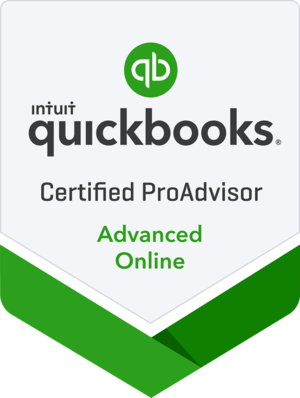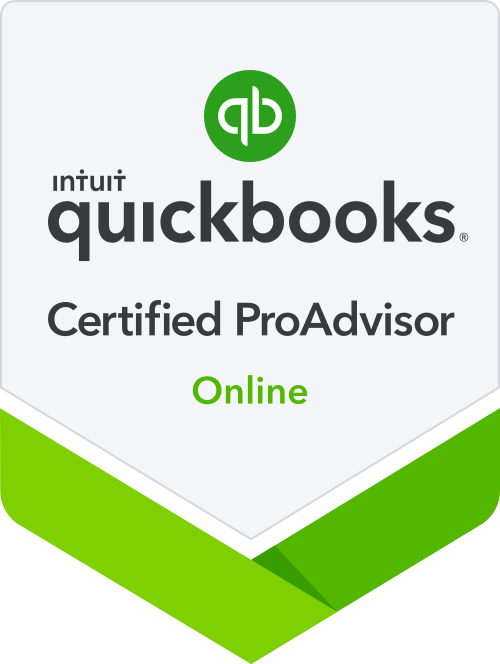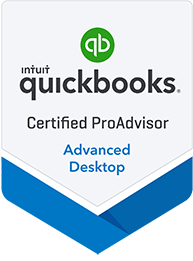“QuickBooks doesn’t work for us. We’ve tried. It’s a mess. We need something that gives us in-depth reporting without so much struggle.”
“We’ve outgrown QuickBooks. We’re deciding between ERP systems and aren’t sure which direction is right for us.”
“I’m sick of reconciling a messy sync between Stripe and QuickBooks. Please make it just WORK!”
We often hear clients suggest they’ve outgrown QuickBooks or need to move to a more robust ERP system, like NetSuite or Sage. They are weary of their accounting system not working efficiently and wonder if it’s becoming more of a problem than a solution.
In most of these cases, QuickBooks usually isn’t the problem. The issue is that QuickBooks wasn’t set up by a professional, so it isn’t functioning at its full potential.
Your business will unlock the true power of QuickBooks with a proper setup. And that power is vast – It means actionable reporting, numbers that tell the story of your business, and problems revealed before they turn into crises.
Three steps (not small, but crucial ones!) to make QuickBooks work for you:
Step 1: Set Up QuickBooks for Success
QuickBooks promotes itself as an accounting tool for non-accountants. However, this claim sets scaling businesses up for future disappointment.
Anyone using QuickBooks can patch together the necessities – income statement, balance sheet, customer invoicing, linked bank and credit feeds, payroll, and bill pay.
But a professional setup or remediation is essential to unlock the tactical insights that inform strategy and drive results.
Your reporting is the destination.
Determine the level of analytical detail you need to extract from your system and work backward from there. Identify the essential KPIs first and then build a custom database tailored to your business that reliably produces the actionable reports you need.
Step 2: Decide Your Tech Stack
QuickBooks is not an ERP System – But if you’re reading this, you may not need one yet. An ERP or Enterprise Resource Management System is an integrated system that encompasses all business arms, as shown in the diagram below.
The challenge of diving into an ERP system too soon, however means you could end up with a heavy and costly system that may have unnecessary functions instead of tools tailored to your specific and immediate needs.

Optimizing QuickBooks is the best intermediary step before implementing a more extensive ERP. The good news is that out-of-box QuickBooks is powerful enough to address many of the above functions, which I will discuss in future newsletters. When you’re ready for more functionality than QuickBooks can offer, an entire ecosystem of bolt-on applications will enhance usage and expand the depth of your particular function of focus.
Here are some applications that we LOVE:
- Transaction Pro: Simplifies data entry by effortlessly importing data into any QuickBooks form.
- QuickBooks Time: Ensures accurate employee time tracking, cross-device interface, and GPS accountability, eliminating manual data entry.
- HubSpot: Centralizes lead and customer information, streamlining interactions and enhancing sales and marketing processes.
- Fathom: Streamlines complex financial analysis for multi-entity and multi-currency consolidated reporting.
- Expensify: Facilitates job costing and reimbursements for travel and expenses.
- Bill.com: Simplifies payment processing through seamless send and receive capabilities.
- Uncat: Notifies key business operators of uncategorized transactions, requests descriptions, collects receipts, and syncs categorized transactions back to QuickBooks.
- Knowify for Contractors: Provides comprehensive software solutions for contracting businesses, offering real-time job costing, flexible invoicing methods, and a range of essential tools for streamlined management.
Step 3: Create Workflows to Get Strategic Financial Insights
You’ve got transactions and data rolling into QuickBooks! But this is where things get messy. Folding a tech stack into QBO requires foresight and testing.
The myth? Accounting integrations are click-and-play – AI and APIs will do the accounting for you!
The reality: Once the platform is enhanced, monthly accounting work still needs to happen. This requires a trained human eye. I’ve seen no level of automation that can replace the honest work of ticking and tying. QuickBooks is a powerful accounting, reporting, and analytical database, but the burden of verifying and vouching for the data lies with your accountant.
The secret to scaling: Accurate, strategic reporting
I will say it till I am blue in the face. If the balance sheet is wrong, the income statement is wrong. I’ve seen how an inaccurate balance sheet can damage a business. You improperly recognize revenue, don’t understand how much your debt truly costs, and have no sense of cash flow (to name a few.)
How do you produce accurate reporting? At the very least, you should have at your disposal the following work papers each month at closing and on your desk for review:
- Revenue Verification
- Schedule of Deferred Revenue
- Schedule of Accrued Expenses
- Debt Schedule
- Schedule of Pre-Paid Expenses
- Statement of Cash Flows
- Statement of Retained Earnings
- Budget to Actuals
If your accounting partner struggles to deliver you a timely Month-End-Close with the above relevant analysis. Let’s talk. There is work to be done.
Your takeaway from this article:
Before you give up on QuickBooks, let us show you what it can do!
The out-of-the-box cataloging features in QuickBooks, enhanced by bolt-on applications and a professional accounting process will make you unstoppable.
If your business is scaling from $2-$50M, it’s time to make data your asset. A fully optimized QuickBooks platform provides the intelligence that drives results.
If you have any questions or want to discuss further, DM me! I’m here to help you scale.









